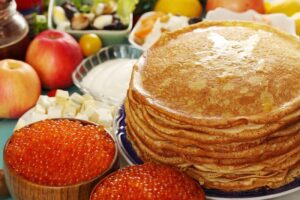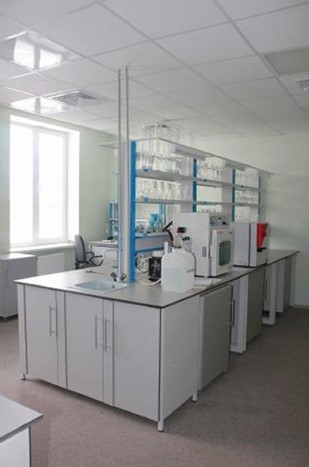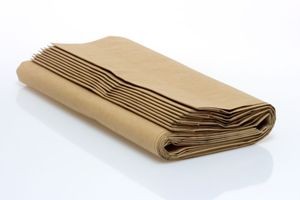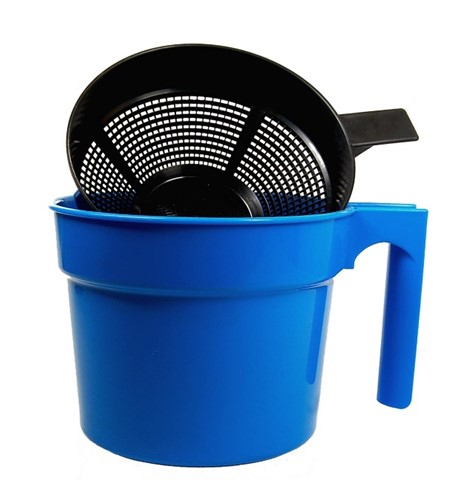What are “non-fish” and “non-meat”, why are they made and who eats it? Asked at the Academy of Sciences

Photo is illustrative in nature. From open sources.
Alternative food products imported from abroad appeared in Belarusian stores. How does the usual fish differ from laboratory “non-fish”, and MEAT from “non-meat”, why were they invented and will they be produced in our country? Elena Morgunova, Deputy DIRECTOR General of the Republican Unitary Enterprise "Scientific and Practical Center of the National Academy of Sciences of Belarus for Food" told. Who are the alternative products for? – Alternative meat food products appeared on our market almost 10 years ago. They can be made from three main types of proteins: plant origin, animal cells and microorganisms (fungi, yeast, unicellular algae). How does the usual fish differ from laboratory “non-fish”, and meat from “non-meat”, why were they invented and will they be produced in our country? Elena Morgunova, Deputy Director General of the Republican Unitary Enterprise "Scientific and Practical Center of the National Academy of Sciences of Belarus for Food" told. Who are the alternative products for? – Alternative meat food products appeared on our market almost 10 years ago. They can be made from three main types of proteins: plant origin, animal cells and microorganisms (fungi, yeast, unicellular algae). How does the usual fish differ from laboratory “non-fish”, and meat from “non-meat”, why were they invented and will they be produced in our country? Elena Morgunova, Deputy Director General of the Republican Unitary Enterprise "Scientific and Practical Center of the National Academy of Sciences of Belarus for Food" told. Who are the alternative products for? – Alternative meat food products appeared on our market almost 10 years ago. They can be made from three main types of proteins: plant origin, animal cells and microorganisms (fungi, yeast, unicellular algae). Who are the alternative products for? – Alternative meat food products appeared on our market almost 10 years ago. They can be made from three main types of proteins: plant origin, animal cells and microorganisms (fungi, yeast, unicellular algae). Who are the alternative products for? – Alternative meat food products appeared on our market almost 10 years ago. They can be made from three main types of proteins: plant origin, animal cells and microorganisms (fungi, yeast, unicellular algae).
The first alternative product was a non-meat hamburger weighing 140 grams. it was introduced in 2013 in London - at a price of $325,000 apiece! Eight years later, an Israeli company reduced the cost of a hamburger with laboratory meat by 28,000 times to $7.5. In December 2020, American laboratory-grown chicken nuggets appeared.
Now such alternatives to the usual food are gaining more and more popularity. Manufacturers strive to create products that are identical in taste and nutritional qualities. The consumer, in turn, wants to see on their plate a healthy gluten-free dish, low (or no) in SUGAR, SALT and fat (and even more so without trans fats). And some are looking for low-calorie foods, others - high-protein, all together - fortified. Therefore, manufacturers began to abandon artificial additives in favor of natural ones. They began to introduce dietary fiber into the products and enrich them with minerals, reduced the calorie content and the amount of fat, and replaced animal fats with vegetable ones. So, gradually, using innovative technologies, companies brought completely new food segments to the market.
Such products can be found in Belarusian supermarkets on the shelves of "healthy food" and in specialized stores for vegans. Look for packages that will be labeled: “for vegans”, “non-meat”, “non-dairy”, “non-fish”. Minced meat and beef stroganoff from soy have been on sale for a long time. How are they different from "non-meat"? - Soy cutlets and "non-meat" minced meat, as they say in Odessa, are two big differences. In the second case, the taste and usefulness are identical to natural pork or beef. "Nemyaso" was created using tissue engineering technology. It is based on the use of cells prone to rapid reproduction (for example, embryonic stem cells, myoblasts), which are grown in a bioreactor. The main nutrient component is animal blood plasma. A mixture of sugars, amino acids, vitamins and minerals is added to it. In the bioreactor, the protein is converted into fibrous structures similar to meat. They are mixed with vegetable oils and natural herbal ingredients like peas, wheat, beans, potatoes into minced meat, from which, for example, cutlets are formed.
At the same time, "non-meat" practically does not differ in taste, texture and cooking methods from beef, pork and chicken. What about "non-fish"? – While it is less than 1% of the global sales of alternative products. The fact is that it is extremely difficult to imitate the subtle taste and texture of the same salmon. And such a product is still expensive - about 80 rubles per kilogram. I am sure that in the future it will become a good alternative to rapidly depleting fisheries, ensure the complete safety of fish raw materials, in particular in terms of toxic elements, reduce the level of ocean plastic pollution by reducing the number of fishing nets, and much more. We are already familiar with "non-milk" - for example, with soy, coconut, oatmeal, buckwheat - Demand for alternative MILK is growing all over the worldand products from it. According to forecasts, this market will amount to 44.89 billion US dollars by 2027! "Non-milk" is suitable for those who have individual intolerance to lactose, milk casein. It is chosen by vegans and those who adhere to a healthy lifestyle. This product will solve the problems of protein deficiency in economically underdeveloped countries in the future. In the meantime, the average price of “non-milk” is 8.6 rubles per liter. Elena Mikhailovna, the mentioned prices are high for Belarusians... - Yes, “non-meat”, “non-fish” and “non-milk” products are not cheap! But companies continue to work on reducing the cost and bringing them closer in composition to high-grade protein foods.
Belarusian manufacturers have also begun to develop this category of products. For example, the specialists of RUE "Institute of Meat and Dairy Industry" have developed a vegetarian "sausage", as well as Ice meat mixtures, intended for the manufacture of an innovative product - "meat" ice cream. Mixes are created on the basis of high-quality meat and dairy raw materials. Ice cream contributes to the prevention of obesity and diabetes, suitable for those who visit gyms and children.
But to bring these products to the market, it will be necessary to create a legal framework and legislative approval of the conceptual apparatus of alternative food products.
Considering the fact that we work in the legal field of the EAEU, we can unite with colleagues from RUSSIA, Kazakhstan, Kyrgyzstan, Armenia. So far, such products as “non-milk”, “non-meat”, “non-chocolate”, which have a complex production technology, are unlikely to be able to integrate into the existing system of product categories. And it's worth getting started. Under the sanctions, it is possible to feed both Belarusians and residents of the countries that are members of the EAEU with healthy plant foods that taste no different from real meat, milk or fish. And not only. The EXPORT of products in demand abroad will always be a great success.
| Tamara MARKINA,. | Photo from open Internet sources.
READ ALSO
The first alternative product was a non-meat hamburger weighing 140 grams. it was introduced in 2013 in London - at a price of $325,000 apiece! Eight years later, an Israeli company reduced the cost of a hamburger with laboratory meat by 28,000 times to $7.5. In December 2020, American laboratory-grown chicken nuggets appeared.
Now such alternatives to the usual food are gaining more and more popularity. Manufacturers strive to create products that are identical in taste and nutritional qualities. The consumer, in turn, wants to see on their plate a healthy gluten-free dish, low (or no) in SUGAR, SALT and fat (and even more so without trans fats). And some are looking for low-calorie foods, others - high-protein, all together - fortified. Therefore, manufacturers began to abandon artificial additives in favor of natural ones. They began to introduce dietary fiber into the products and enrich them with minerals, reduced the calorie content and the amount of fat, and replaced animal fats with vegetable ones. So, gradually, using innovative technologies, companies brought completely new food segments to the market.
Such products can be found in Belarusian supermarkets on the shelves of "healthy food" and in specialized stores for vegans. Look for packages that will be labeled: “for vegans”, “non-meat”, “non-dairy”, “non-fish”. Minced meat and beef stroganoff from soy have been on sale for a long time. How are they different from "non-meat"? - Soy cutlets and "non-meat" minced meat, as they say in Odessa, are two big differences. In the second case, the taste and usefulness are identical to natural pork or beef. "Nemyaso" was created using tissue engineering technology. It is based on the use of cells prone to rapid reproduction (for example, embryonic stem cells, myoblasts), which are grown in a bioreactor. The main nutrient component is animal blood plasma. A mixture of sugars, amino acids, vitamins and minerals is added to it. In the bioreactor, the protein is converted into fibrous structures similar to meat. They are mixed with vegetable oils and natural herbal ingredients like peas, wheat, beans, potatoes into minced meat, from which, for example, cutlets are formed.
At the same time, "non-meat" practically does not differ in taste, texture and cooking methods from beef, pork and chicken. What about "non-fish"? – While it is less than 1% of the global sales of alternative products. The fact is that it is extremely difficult to imitate the subtle taste and texture of the same salmon. And such a product is still expensive - about 80 rubles per kilogram. I am sure that in the future it will become a good alternative to rapidly depleting fisheries, ensure the complete safety of fish raw materials, in particular in terms of toxic elements, reduce the level of ocean plastic pollution by reducing the number of fishing nets, and much more. We are already familiar with "non-milk" - for example, with soy, coconut, oatmeal, buckwheat - Demand for alternative MILK is growing all over the worldand products from it. According to forecasts, this market will amount to 44.89 billion US dollars by 2027! "Non-milk" is suitable for those who have individual intolerance to lactose, milk casein. It is chosen by vegans and those who adhere to a healthy lifestyle. This product will solve the problems of protein deficiency in economically underdeveloped countries in the future. In the meantime, the average price of “non-milk” is 8.6 rubles per liter. Elena Mikhailovna, the mentioned prices are high for Belarusians... - Yes, “non-meat”, “non-fish” and “non-milk” products are not cheap! But companies continue to work on reducing the cost and bringing them closer in composition to high-grade protein foods.
Belarusian manufacturers have also begun to develop this category of products. For example, the specialists of RUE "Institute of Meat and Dairy Industry" have developed a vegetarian "sausage", as well as Ice meat mixtures, intended for the manufacture of an innovative product - "meat" ice cream. Mixes are created on the basis of high-quality meat and dairy raw materials. Ice cream contributes to the prevention of obesity and diabetes, suitable for those who visit gyms and children.
But to bring these products to the market, it will be necessary to create a legal framework and legislative approval of the conceptual apparatus of alternative food products.
Considering the fact that we work in the legal field of the EAEU, we can unite with colleagues from RUSSIA, Kazakhstan, Kyrgyzstan, Armenia. So far, such products as “non-milk”, “non-meat”, “non-chocolate”, which have a complex production technology, are unlikely to be able to integrate into the existing system of product categories. And it's worth getting started. Under the sanctions, it is possible to feed both Belarusians and residents of the countries that are members of the EAEU with healthy plant foods that taste no different from real meat, milk or fish. And not only. The EXPORT of products in demand abroad will always be a great success.
| Tamara MARKINA,. | Photo from open Internet sources.
READ ALSO
Read together with it:
- О самых распространенных причинах пожаров рассказали в МЧС2 октября, Минск. О самых распространенных причинах пожаров рассказал начальник главного управления надзора и профилактики МЧС Дмитрий Турчин на "Предупреждение чрезвычайных ситуаций в осенне-зимний период. Профилактика пожаров и гибели людей от них", которая прошла в БЕЛТА. "В республике наблюдается рост количества пожаров на 7,7%, и на 1......
- В Раменском выведена новая порода кроликов — Великородская белаяЭто значимое событие обозначает первую отечественную породу, разработанную для племенного и промышленного производства за последние 60 лет. Глава Раменского муниципального округа Эдуард Малышев посетил институт, где директор, доктор биологических наук Глеб Косовский, провел ознакомительную экскурсию для почетных гостей. Институт служит научно-методической базой для разработки технологий в области ...
- Боливия экспортирует говядину на сумму 797 миллионов долларов и вводит новые цифровые сертификаты для внешней торговлиЭкспорт говядины из Боливии в период с 2021 по 2025 год достиг 797 миллионов долларов. Китай является основным рынком сбыта этого мяса, на который приходится 74% продаж, сообщила Карина Серрудо, генеральный директор Национального таможенного управления. Параллельно с этим ведомство включило сертификат безопасности экспортных пищевых продуктов для говядины в систему «Единое окно для внешней торговл...
- Поголовье свиней в Бразилии продолжает растиТакже наблюдался рост убоя свиней на 1,2%, достигнув рекордного уровня в 2024 году, хотя рост сектора замедлился. Экспорт свинины также достиг исторического максимума. По географическому распределению Толедо (штат Парана) сохранил лидерство по производству свинины среди 5487 муниципалитетов, где ведётся свиноводство, на долю которого приходится 2,2% от общего поголовья (95......




























































